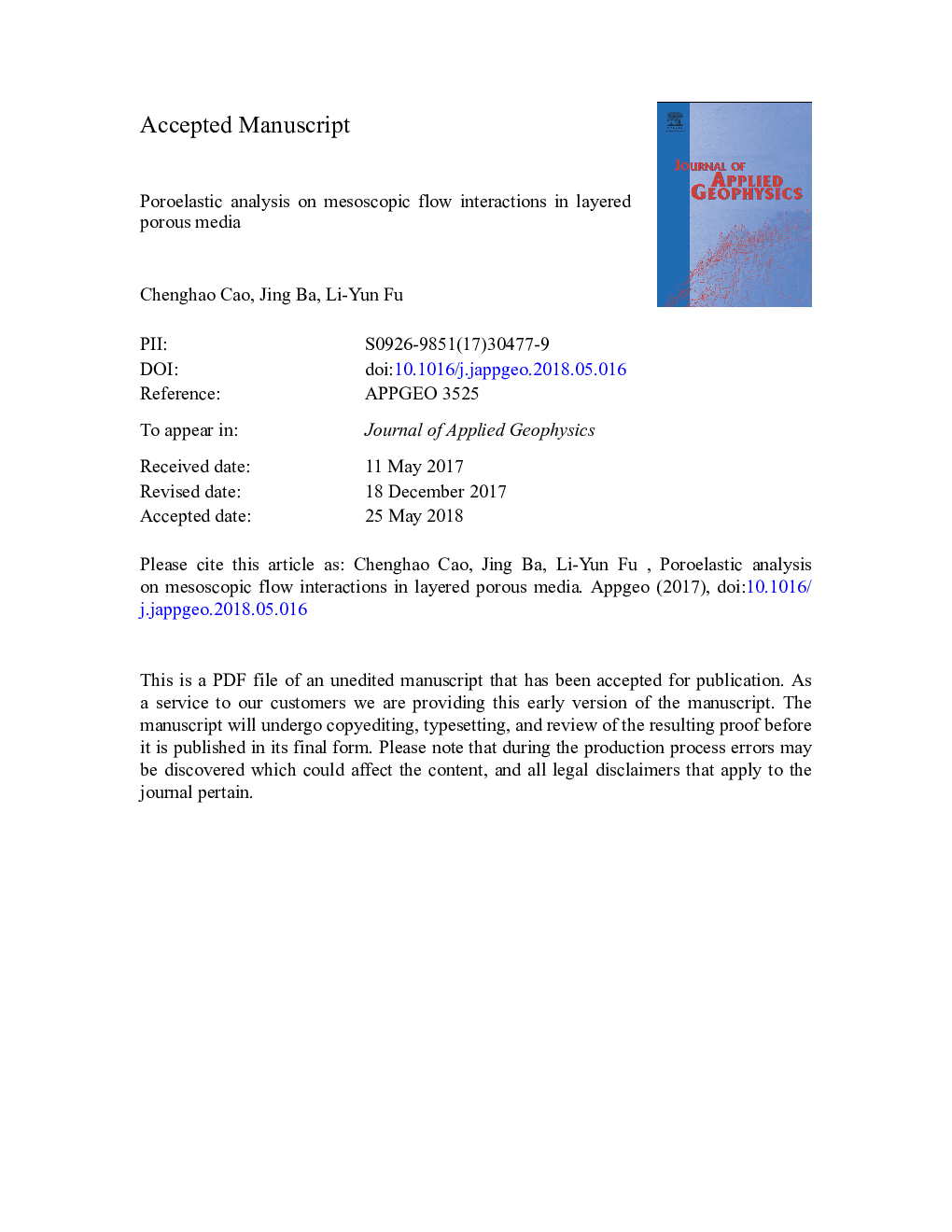| Article ID | Journal | Published Year | Pages | File Type |
|---|---|---|---|---|
| 8915322 | Journal of Applied Geophysics | 2018 | 48 Pages |
Abstract
The wave-induced interlayer flow between mesoscopic-scale heterogeneities (i.e., larger than pore scale but smaller than the predominant wavelengths) is the most important cause of attenuation at frequencies below 1â¯kHz. According to the White's layered model (White et al., 1975), the wave-induced flow at an interface is symmetrical in periodically layered porous media due to its symmetrical structure. However, in one-dimensional (1-D) randomly layered porous rocks, layers of various thicknesses lead to different types of the interlayer flow. The coexistence of various wave-induced interlayer flow patterns at different interfaces results in interactions. The numerical creep test and a volume average of White's analytical solution were used to analyse the interactions in the two kinds of models (i.e., representative elementary volumes and randomly layered models). One of the parameters used to build a randomly layered model is the standard deviation of the thickness of the water-saturated layer, which could control the interaction strength of the interlayer flow. The detailed characteristics of the interlayer flow interaction were demonstrated by analysing the relative fluid velocity, while the statistical characteristics of the interlayer flow interaction were demonstrated by analysing the average solid velocity. We investigated the effect of the interaction on the amplitude versus the deviation at the interface between a non-dispersive medium and a patchy-saturated dispersive medium in three types of reservoirs. These results are beneficial for describing the distribution of oil/gas patches based on the statistical seismic properties in a layered formation with random disorder.
Related Topics
Physical Sciences and Engineering
Earth and Planetary Sciences
Geophysics
Authors
Chenghao Cao, Jing Ba, Li-Yun Fu,
